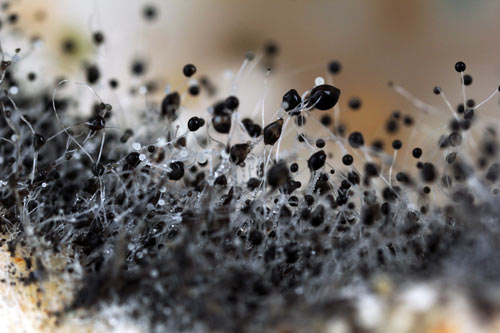What Are Mold Spores? Why is Treatment Important?
Mold is challenging to eliminate due to its ability to grow in wall cracks, carpet fibers and other difficult-to-reach areas. The answer lies in mold information about spores, which are the reproductive unit of molds and other fungi.
Are you puzzled how something so minute can cause building damage and health problems? Here is some helpful mold information explaining what spores are and the role they play in home and building infestations.
Characteristics of mold spores
 You might not realize it, but you're surrounded by spores, both indoors and outdoors. They range in size from three to 40 microns, less than half the width of a human hair, allowing them to float in the air sight unseen.
You might not realize it, but you're surrounded by spores, both indoors and outdoors. They range in size from three to 40 microns, less than half the width of a human hair, allowing them to float in the air sight unseen.
Mold acts as nature's "recycler", feeding on dead and decaying organic material such as trees and plants, so spores often come from farm land, parks and other places rich in vegetation. Spore counts are higher after extended rainfall or in areas of high humidity.
How spores cause the spread of mold
As mold spores drift through the air, they eventually come to settle on a surface. Mold information indicates that it requires nutrients, moisture and the right temperature to grow. If the conditions are right, the spores begin generating thread-like cells called hyphae, which absorb nutrients allowing mold to grow.
Negative effects of mold spores
Clearly, the biggest threat posed by spores is the development of mold. In addition, spores can cause serious health problems that are well-documented in mold information. Since they are even smaller than pollen grains, they can be ingested into the respiratory system without getting trapped by the normal filtering process of the nose.
Inhaling mold spores can trigger allergic reactions and result in upper respiratory ailments like wheezing, coughing and itchy, runny eyes. In some cases, people who are particularly sensitive may suffer asthma attacks.
Importance of treatment
According to mold information from the EPA, eliminating spores altogether is impossible, so you need to control the conditions that create mold growth. The easiest and most effective method is to reduce the amount of moisture in your home or business.
If you do find a mold infestation, it's best to have it treated professionally. You can find mold information about cleaning with over-the-counter products, but it often serves only to disperse mold spores so mold can become established in another area.
The best mold treatment is clean-up and prevention
Effective mold treatment is a two-step process. The existing mold needs to be eliminated, and methods have to be implemented to protect against future infestations. Non-toxic removal followed by application of a polymer sealer that repels mold is fast and highly effective.